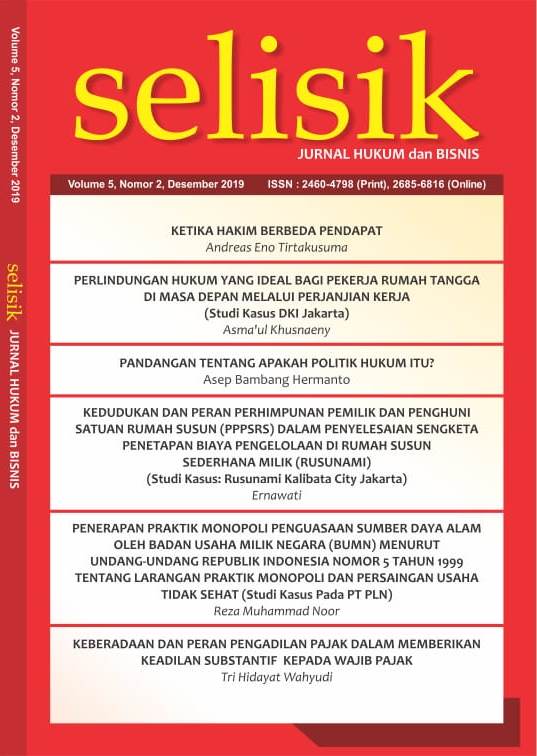KETIKA HAKIM BERBEDA PENDAPAT
Abstract views: 275 | pdf (Bahasa Indonesia) downloads: 548
Abstract
in deciding a case by a panel of judges with composition of at least three judges, it will make any possibility for any judge make different opinion between one judge and another, even though the decision should be based on unanimous deliberation. If they cannot reach the unanimous deliberation, then the decision shall be taken with voting. The different opinion, that is “dissenting opinions,” must still be included in the decision. There are two types of dissenting opinions, they are the "reasoned or reasonable," which gives the reasoning of judges who differ in their opinions in detail, and the "non-reasoned or without reason," which does not have to mention the reasons why the judge has a different opinion. The existance of dissenting opinions could provide various benefits, such as to guarantee judicial independence, especially for individual judges who has the different opinions. Dissenting opinions also could promote case reviews so that they can become a reference and consideration for other judges later. This article reviewing a brief history of and the practice of dissenting opinions, both before and after it is regulated in a specific regulation for it. Beside it, this article is also reviewing concurring opinion and its application, which has similarities with dissenting
opinion.

This work is licensed under a Creative Commons Attribution 4.0 International License.


.gif)


1_(1).jpg)



